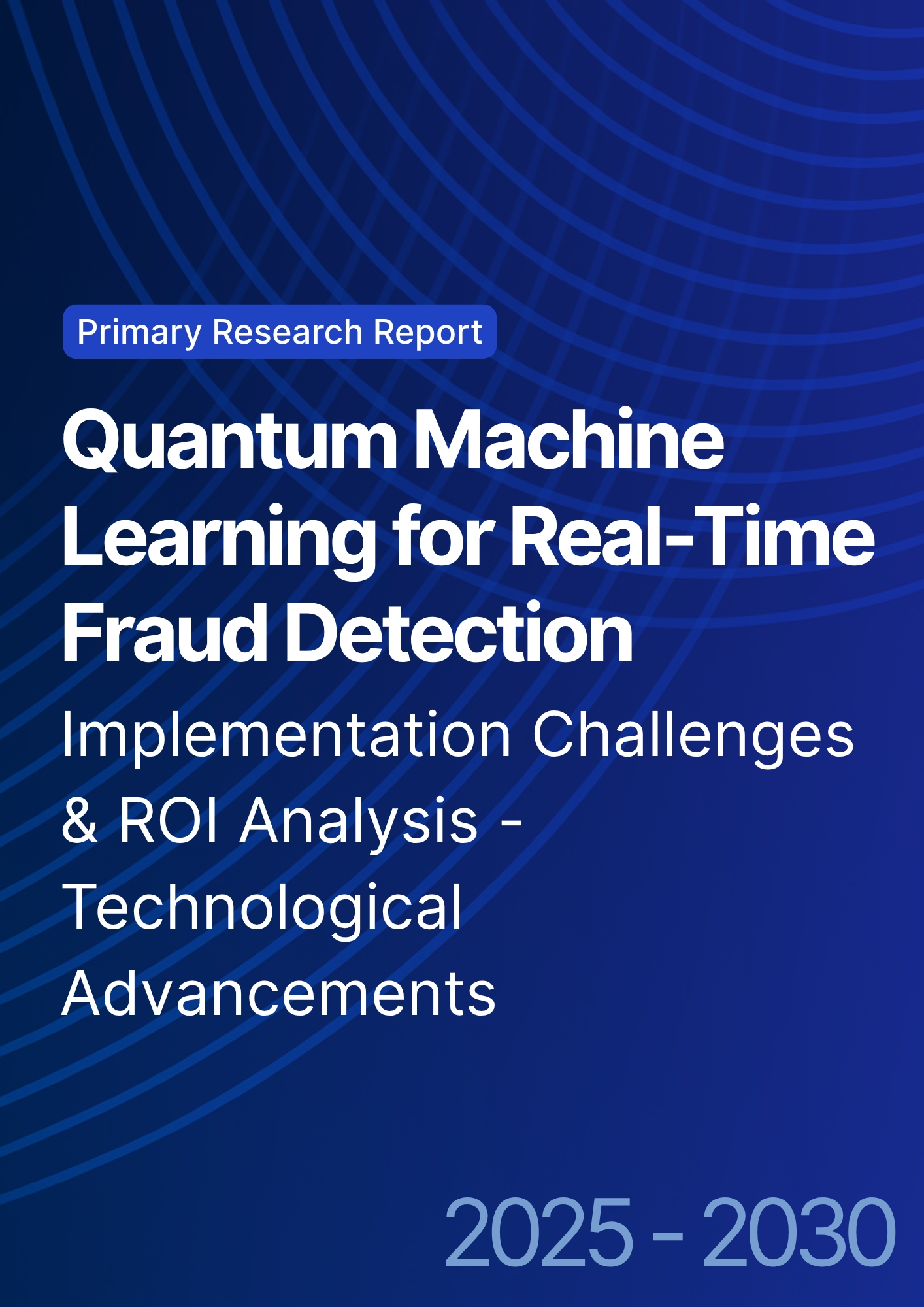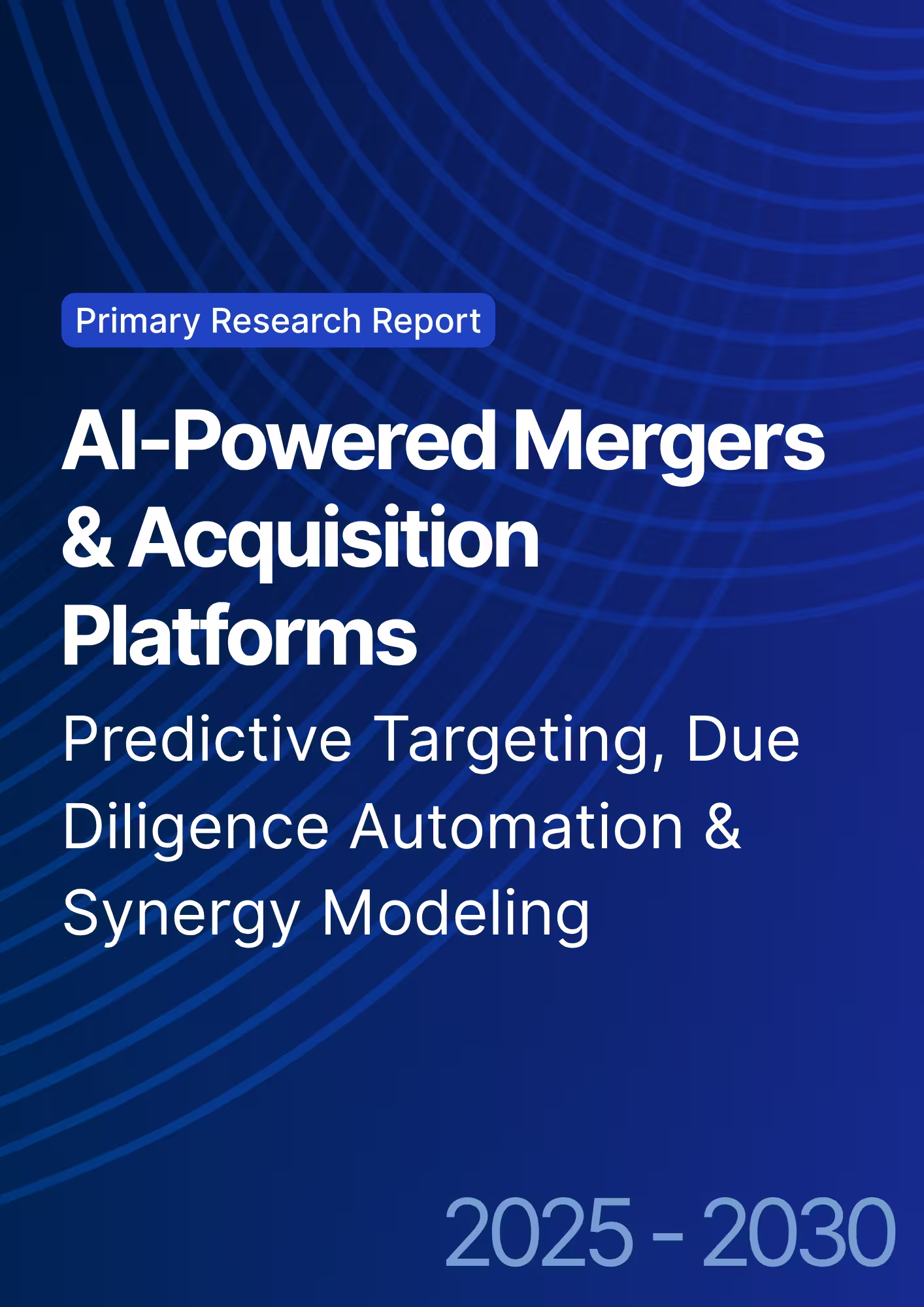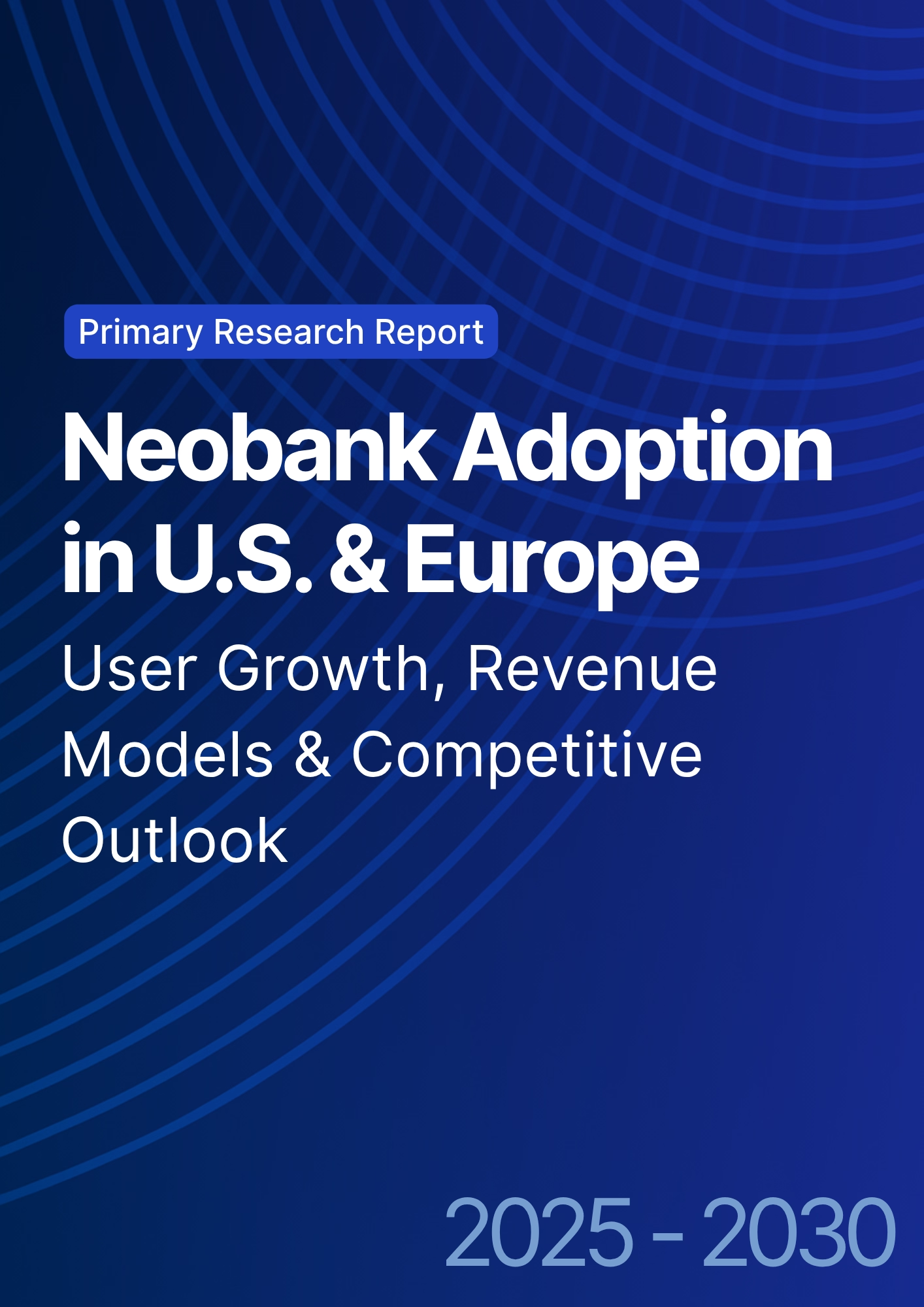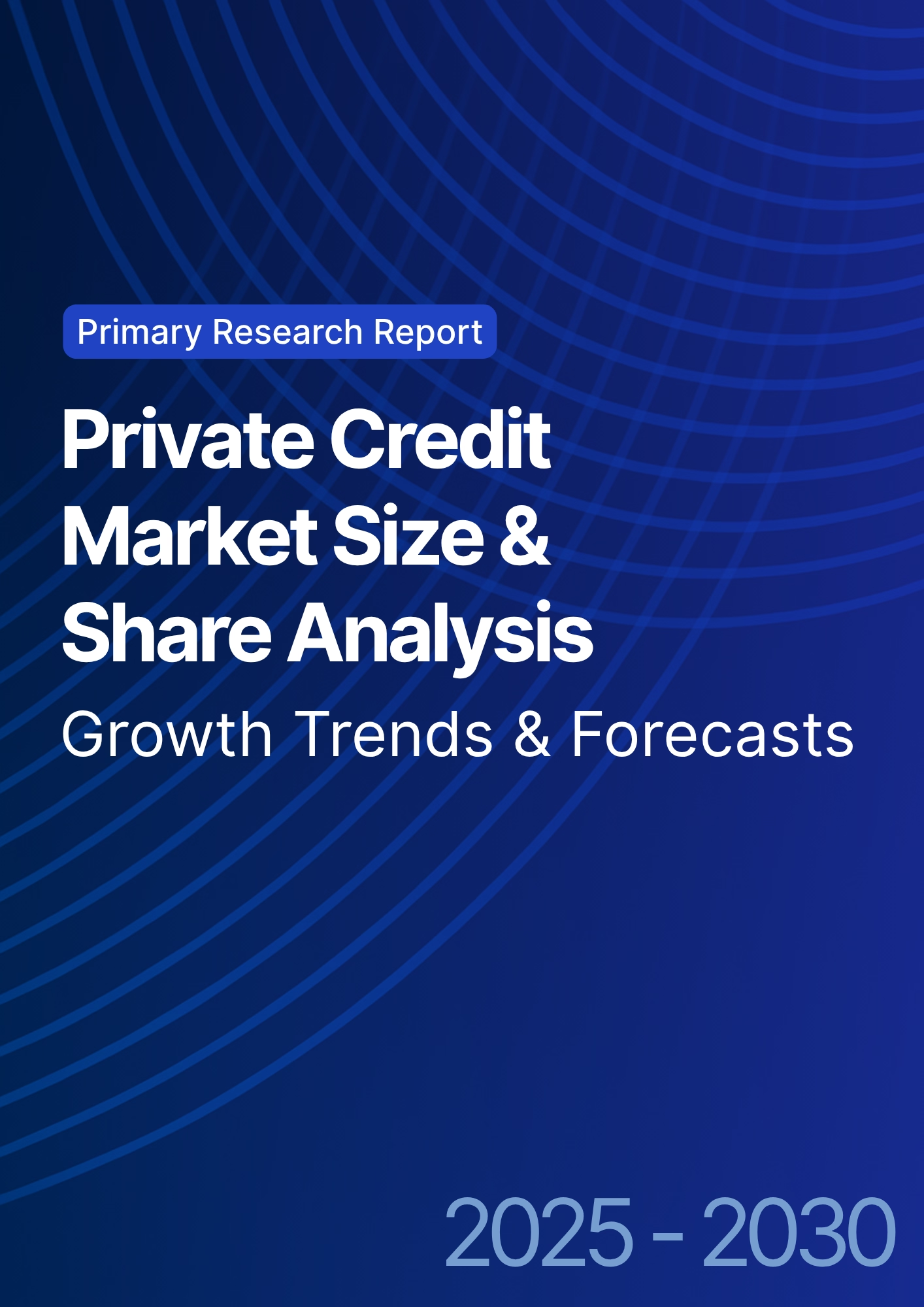

68 Circular Road, #02-01 049422, Singapore
Revenue Tower, Scbd, Jakarta 12190, Indonesia
4th Floor, Pinnacle Business Park, Andheri East, Mumbai, 400093
Cinnabar Hills, Embassy Golf Links Business Park, Bengaluru, Karnataka 560071
Connect With Us
Quantum Machine Learning for Real-Time Fraud Detection: Implementation Challenges & ROI Analysis - Technological Advancements
This research explores the application of quantum machine learning (QML) for real-time fraud detection in USA and EU from 2025 to 2030, focusing on implementation challenges and ROI analysis. The report examines how quantum algorithms and machine learning models can enhance fraud detection accuracy, reduce false positives, and speed up decision-making. It provides insights into the challenges of integrating quantum technologies with existing fraud detection systems, as well as the expected ROI for financial institutions adopting these technologies.

What's Covered?
Report Summary
Key Takeaways
- Quantum machine learning market for fraud detection projected to grow from $450 million in 2025 to $9.4 billion by 2030, CAGR 69%.
- Quantum-enhanced machine learning algorithms expected to improve fraud detection accuracy by 30% compared to classical models.
- Real-time fraud detection speed is projected to increase by 2–3 times with quantum machine learning integration.
- Implementation challenges include high initial investment, talent scarcity, and integration complexity, expected to slow adoption in the short term.
- ROI from quantum machine learning in fraud detection is projected at 20–28% by 2030.
- False positives in fraud detection are expected to decrease by 35% by 2030 with quantum integration.
- Quantum machine learning models expected to process 80% of financial transactions in real time by 2030.
- Institutional adoption of quantum machine learning in fraud detection is expected to account for 75% of market share by 2030.
- Cross-border fraud detection capabilities to improve by 40% with quantum machine learning algorithms.
- Regulatory concerns regarding data privacy and security are expected to slow adoption in some regions by 10%.
Key Metrics
Market Size & Share
The quantum machine learning market for real-time fraud detection is expected to grow rapidly in the USA and EU, expanding from $450 million in 2025 to $9.4 billion by 2030, reflecting a CAGR of 69%. The major adoption drivers in both regions include financial institutions, banks, and insurance companies. By 2030, quantum machine learning models will process 80% of financial transactions in real-time, enabling faster and more accurate detection of fraudulent activities. False positives are expected to decrease by 35%, improving fraud detection accuracy and operational efficiency. Institutional investors will account for 75% of market share, leading the adoption due to the need for better fraud prevention and risk management strategies. The integration of quantum algorithms will enable 2–3 times faster fraud detection and will significantly reduce the time required to process large amounts of transaction data. The ROI for financial institutions adopting quantum machine learning is projected to reach 20–28% by 2030, driven by improved fraud detection capabilities, lower operational costs, and faster decision-making. However, the market faces significant implementation challenges, including high initial investment costs, integration complexity with existing systems, and the scarcity of quantum talent, which may slow adoption in the early years of the forecast period.
.png)
Market Analysis
The quantum machine learning market for fraud detection is poised for rapid growth in USA and EU. By 2030, quantum algorithms are expected to process 80% of financial transactions in real-time, enhancing fraud detection speed and accuracy. With false positives reduced by 35%, financial institutions will benefit from improved detection rates and customer service. The market will expand from $450 million in 2025 to $9.4 billion by 2030, with CAGR of 69%. Institutional investors will account for 75% of market share, with banks and fintechs leading the charge in implementing quantum-powered fraud detection models. Cross-border fraud detection will improve by 40%, as quantum computing offers enhanced global data-sharing capabilities. By 2030, quantum machine learning will offer more accurate and faster risk management solutions, improving the security of international financial transactions. Real-time fraud detection will be 2–3 times faster, while quantum-enhanced algorithms will improve fraud detection accuracy by 30% compared to classical models. ROI for financial institutions is projected to reach 20–28%, driven by faster fraud detection, lower false positives, and improved risk management. Despite these benefits, implementation challenges such as high upfront costs and the lack of quantum expertise in the market could delay widespread adoption.
.png)
Trends & Insights
The quantum machine learning market for fraud detection is rapidly gaining traction, with projections for growth from $450 million in 2025 to $9.4 billion by 2030, CAGR 69%. Key trends include the increasing adoption of quantum-powered models for real-time fraud detection, which are expected to process 80% of financial transactions by 2030. Quantum algorithms will improve fraud detection accuracy by 30% and reduce false positives by 35%, enhancing customer trust and reducing operational inefficiencies. Real-time fraud detection will become 2–3 times faster, allowing financial institutions to respond quickly to threats. Institutional adoption of quantum machine learning is projected to account for 75% of market share by 2030, driven by higher accuracy, reduced fraud-related losses, and better decision-making. Cross-border fraud detection will improve by 40%, making quantum machine learning key to global transaction security. The ROI for financial institutions adopting these technologies is expected to be 20–28%, driven by faster fraud detection, improved risk management, and better operational efficiency. However, implementation challenges such as high investment costs, complex integration, and data privacy concerns may slow adoption in the early stages. Regulatory hurdles in the EU related to GDPR compliance will also affect market growth.
Segment Analysis
The quantum machine learning market for fraud detection in USA and EU is segmented by institution type, data sources, and technology adoption. By 2030, institutional investors will account for 75% of market share, particularly large banks, fintech companies, and insurers. Quantum algorithms will significantly improve fraud detection accuracy by 30% and reduce false positives by 35%, enhancing overall operational efficiency. Real-time fraud detection will be 2–3 times faster with the use of quantum computing, enabling quicker and more accurate detection of fraudulent activities. The cross-border fraud detection capabilities will improve by 40%, allowing for more secure and efficient monitoring of international transactions. Financial institutions will benefit from improved risk management, enhanced by quantum machine learning models, which will process 80% of transactions in real-time. By 2030, the expected ROI from quantum machine learning applications is 20–28%, driven by reduced operational costs, more precise fraud detection, and improved customer satisfaction. Despite these benefits, implementation challenges such as integration complexity, high initial costs, and the need for specialized talent may slow adoption. Data privacy regulations in the EU will further influence the pace of quantum adoption in fraud detection.
Geography Analysis
The US and EU markets will dominate the quantum machine learning for fraud detection sector, accounting for 75% of the market share by 2030. The US will continue to lead, capturing 50% of the market, due to early adoption and substantial investments in quantum technologies. The EU, driven by regulatory frameworks like GDPR, will contribute 25%, focusing on secure fraud detection in compliance with data protection laws. Real-time fraud detection will be 2–3 times faster with quantum machine learning, significantly improving fraud detection accuracy by 30% and reducing false positives by 35%. Cross-border fraud detection will increase by 40%, as quantum technologies allow better data integration and global transaction monitoring. By 2030, quantum models will process 80% of transactions in real-time, improving operational efficiency. Institutional investors will provide 75% of market inflows, propelling adoption of quantum computing technologies in both regions. ROI for quantum-powered fraud detection systems is projected to be 20–28%, driven by improved fraud prevention, higher accuracy, and faster detection rates. Regulatory concerns, such as GDPR compliance in the EU, will influence the adoption pace, particularly related to data privacy and security.
.png)
Competitive Landscape
The quantum machine learning for fraud detection market is highly competitive, with major quantum computing companies like IBM, Google, D-Wave, and Microsoft leading the way. These companies will provide financial institutions with quantum-powered platforms and AI algorithms for enhanced fraud detection and risk management. Banks, fintech firms, and insurance companies are expected to drive 75% of market adoption by 2030. Cross-border fraud detection will improve by 40%, making quantum-powered solutions key to global transaction security. The competitive edge in the market will be determined by the ability to integrate quantum technologies with existing systems, offer scalable solutions, and comply with data privacy regulations such as GDPR. Institutional investors will play a major role in the adoption of quantum machine learning, contributing 70% of the market share. ROI from quantum machine learning applications in fraud detection is expected to be 20–28% by 2030, driven by the improvement of fraud detection accuracy, reduced operational costs, and faster decision-making. Partnerships between tech firms and financial institutions will enable the widespread deployment of quantum technologies across US and EU financial sectors.
Report Details
Proceed To Buy
Want a More Customized Experience?
- Request a Customized Transcript: Submit your own questions or specify changes. We’ll conduct a new call with the industry expert, covering both the original and your additional questions. You’ll receive an updated report for a small fee over the standard price.
- Request a Direct Call with the Expert: If you prefer a live conversation, we can facilitate a call between you and the expert. After the call, you’ll get the full recording, a verbatim transcript, and continued platform access to query the content and more.


68 Circular Road, #02-01 049422, Singapore
Revenue Tower, Scbd, Jakarta 12190, Indonesia
4th Floor, Pinnacle Business Park, Andheri East, Mumbai, 400093
Cinnabar Hills, Embassy Golf Links Business Park, Bengaluru, Karnataka 560071
Request Custom Transcript
Related Transcripts
$ 1450
$ 1450


68 Circular Road, #02-01 049422, Singapore
Revenue Tower, Scbd, Jakarta 12190, Indonesia
4th Floor, Pinnacle Business Park, Andheri East, Mumbai, 400093
Cinnabar Hills, Embassy Golf Links Business Park, Bengaluru, Karnataka 560071





.png)







